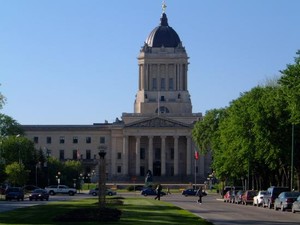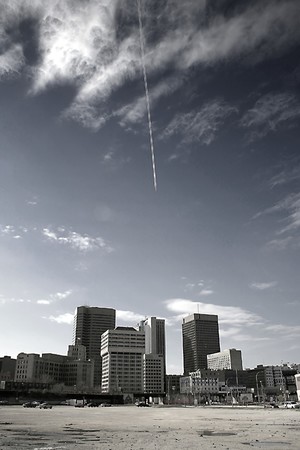Andrew
Money-waste kings
Feb 27, 2009

The Winnipeg Regional Health Authority wants to improve its communication skills in the wake of the Brian Sinclair/emergency room debacle, the Winnipeg Sun has learned.
And they're blowing $125,000 of taxpayers' money on focus groups, public consultations and maybe even a survey to improve how they interact with patients and how they communicate among themselves.
You have to hand it to these guys. When it comes to finding new and useless ways of spending tax dollars, these guys are the champs.
"In light of recent events, we recognize that the region must improve the way in which we interact with the people in need of our care and to the valued staff within our large and complex organization," says a memo sent to WRHA staff last week. "The process will involve public consultations as well as input from staff who work within the region."
Three focus groups
The WRHA has hired Prairie Research Associates to conduct three focus groups with staff in March to get input from doctors, nurses, payroll staff and housekeeping personnel -- among others -- on how to improve internal and external communications.
WRHA officials confirmed yesterday they will be holding similar focus groups with the general public.
If they want to improve their communications, they should have just asked me for some free advice.
No need to spend $125,000 on consultants.
If they asked me, I would tell them that when someone comes into a hospital emergency room and speaks to a triage aide because they have a serious medical problem, that ER staff should pay attention to the patient.
Always tell the truth
Also, in order to improve their communication with people who need care, they may want to check on people who have been sitting in the ER waiting for more than a day, like Brian Sinclair, who waited 34 hours in the ER at Health Sciences Centre before he died a slow painful death.
Corporately, I would advise the WRHA that when something like this happens, they should tell the public the truth, all the truth and nothing but the truth.
That would substantially improve their external communications.
They don't need focus groups and surveys to figure that out.
When a mistake like the one involving Sinclair is made, the WRHA should be open and accountable about what happened.
If there is information gleaned from surveillance video, for example, showing that Sinclair went to the triage desk, be honest about it and tell the public the truth.
Don't tell them Sinclair "never made it to the triage desk" when he clearly did.
That's bad external communications. Very Bad.
And when there's an administrative review conducted to review the calamity, make the document public so people can read for themselves what happened.
Don't hide behind bogus legal advice that you can't release the document.
Be open and accountable and release all the facts of the case.
That would substantially improve the WRHA's external communications.
In fact, I bet that's what many of the participants in these focus groups -- whether doctors, janitors or members of the public -- will tell the moderators when asked how the WRHA can improve its external communications.
It's not that complicated.
Rather than trying to manage the news and spin the information, just tell the truth.
You don't need an expensive consultant's report to come to that conclusion.
For more, visit Brodbeck's blog Raise a Little Hell at winnipegsun.com. Reach Tom at 632-2742 or by e-mail at tom.brodbeck@sunmedia.ca.
Share
Post comment
Like
'Because he's native?
Feb 15, 2009

The Assembly of Manitoba Chiefs is lobbying to give aboriginal people a greater role in the health care system in the wake of Brian Sinclair's death, which the AMC and Sinclair's brother suspect may have been partly due to racism.
AMC Grand Chief Ron Evans and Sagkeeng Chief Donovan Fontaine, a member of AMC's health task force, discussed Sinclair's death yesterday as his brother Bradley Sinclair looked on.
Brian Sinclair was found dead in the Health Sciences Centre emergency waiting room 34 hours after entering the facility seeking care for a blocked catheter last fall.
Bradley Sinclair did not speak publicly yesterday, but Fontaine said he had spoken with the man and was comfortable speaking on his behalf about his brother's death.
"Obviously he's angered, and the first thing he said was 'Is it because he's native?' We are not going to play the race card here, but many of our people are wondering what the outcry would have been if this was a non-aboriginal person," Fontaine said.
Fontaine said Sinclair's death exposed systemic problems in health care.
"This goes beyond emergency room waiting lines," Evans said, noting people from First Nations communities are increasing traffic at Winnipeg hospitals because of a lack of primary health care in their home communities.
"More and more of our people are in the lineups, waiting rooms and wards of Winnipeg hospitals, especially Health Sciences Centre," he said. "The government should be bringing health care to the people, not people to the health care."
The AMC made four recommendations yesterday, including requesting a seat on the Winnipeg Regional Health Authority board, asking for bi-monthly meetings with the WRHA, expanding the role and number of aboriginal patient advocates in the health care system, and working with health officials to increase capacity and services to First Nations people.
Evans said everyone must also lobby Ottawa to increase funding for on-reserve primary health care services.
"We think the ideas proposed by the AMC, including the board appointment, are good ideas. The minister will be setting up meetings shortly with aboriginal leaders to discuss how to move forward," said a spokesman for Health Minister Theresa Oswald.
Meanwhile, Chief Judge Ray Wyant, the head of Manitoba's provincial court, announced yesterday that he will preside over the Sinclair inquest.
The inquest dates have yet to be scheduled.
Wyant has been chief judge of the provincial court since July 2002.
paul.turenne@sunmedia.ca
Share
Post comment
Like
Thats The whole list
Nov 22, 2008
https://en.wikipedia.org/wiki/Winnipeg,_Manitoba#Military
Share
Post comment
Like
frist prejidice then war
Nov 22, 2008
The first French officer arrived in the area in 1738. Sieur de la Vérendrye built the first fur trading post on the site (Fort Rouge) for the North West Company, who continued to trade there for several decades before the arrival of the Hudson's Bay Company.[9] Fort Gibraltar was built by the North West Company in 1809, and Fort Douglas was built by the Hudson's Bay Company in 1812. The two companies fought fiercely over trade in the area, and each destroyed some of the other's forts over the course of several battles. In 1821, the Hudson's Bay and North West Companies ended their long rivalry with a merger. Fort Gibraltar, within the site of present-day Winnipeg, was renamed Fort Garry in 1822 and became the leading post in the region for the Hudson’s Bay Company. Fort Garry was destroyed in an 1826 flood and rebuilt in 1835. It remained the residence of the Governor of the company for many years and became a part of the major first colony and settlement in western Canada.
In 1869–70, Winnipeg was the site of the Red River Rebellion, a conflict between the local provisional government of Métis, led by Louis Riel, and the newcomers from eastern Canada; General Garnet Wolseley was sent to put down the rebellion. This rebellion led directly to Manitoba's entry into Canadian Confederation as Canada's fifth province in 1870, and on November 8, 1873, Winnipeg was incorporated as a city. In 1876, the post office officially adopted the name "Winnipeg."
Winnipeg's boom during the 1890s and early 20th century allowed it to take on its distinctive multicultural character. The Manitoba Legislative Building reflects the optimism of the boom years. Built mainly of Tyndall Stone and opened in 1920, its dome supports a bronze statue finished in gold leaf titled, "Eternal Youth and the Spirit of Enterprise" (commonly known as the "Golden Boy").
Winnipeg faced financial difficulty when the Panama Canal opened in 1914. The canal reduced reliance on Canada's rail system for international trade, and the increase in ship traffic helped Vancouver surpass Winnipeg to become Canada's third-largest city in the 1960s.[10]
Share
Post comment
Like